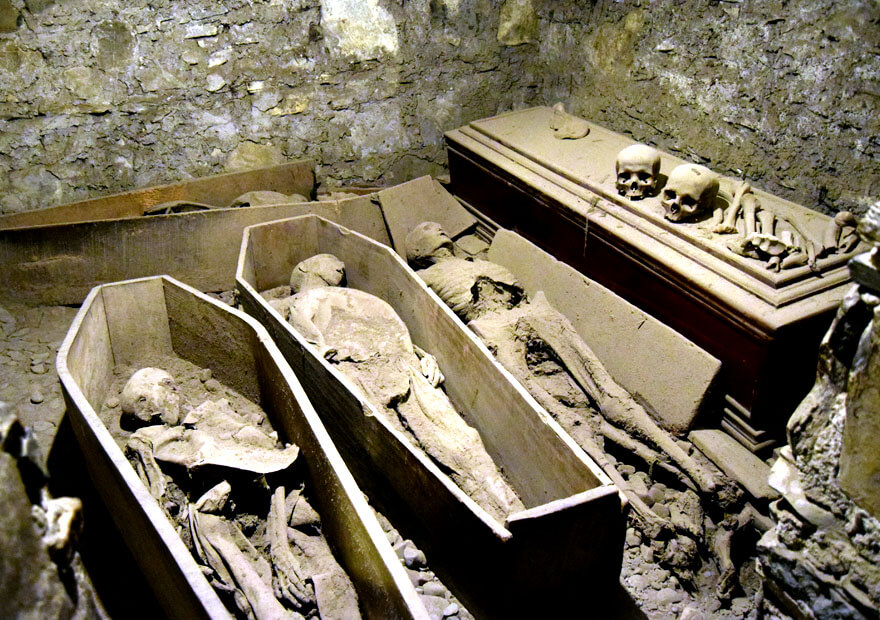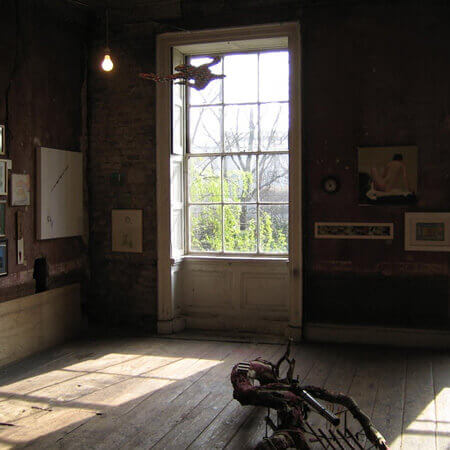Do the vaults really contain restless spirits?
St Michan’s Church is situated behind Dublin’s Four Courts on Church Street, just around the corner from the Jameson Distillery in Smithfield. It was originally founded in 1095 and is the oldest parish church on the northside of Dublin.
It was rebuilt in 1685 and contains a large pipe organ, which Handel is said to have played during the first ever performance of his ‘Messiah’. The interior has changed little since Victorian times and the main church still holds mass every second Sunday, but what lies beneath is even more fascinating.
St Michan’s mummies
Under the church, through large metal chained doors and down a narrow stone stairway, are burial vaults containing the mummified remains of many of Dublin’s most influential 17th, 18th and 19th century families.
The crypt’s best-known residents
The legendary Sheares brothers are down here. These republican revolutionaries were convicted of high treason after the Irish Rebellion of 1798. As a result, they were hung, drawn and quartered by an executioner in Dublin – as was standard practice at that time.
The highly decorated coffins of the Earls of Leitrim and Wolfe Tone’s death mask can also be found in the vaults.
Nobody’s sure quite how the bodies have been preserved for all these years. Perhaps the constant dry atmosphere is responsible, the limestone walls or the methane gas that leaks up from the soggy ground underneath.
The vaults were owned by wealthy families and some coffins are highly decorated with gold studs and fancy plaques. The Earls of Leitrim have some of the most elaborate and expensive coffins – apart from the 3rd Earl. He was known as a selfish man so his family gave him a plain coffin. Some family members even gave up their own place in the vault so they wouldn’t have to be buried next to him.

Mummified remains within the vaults of St Michan’s Church
Inside several of the individual vault cells, you can see coffins stacked every which-way. Generations of the same family lie on top of one another. Some coffins collapsed under the weight of the ones on top, so the bones of arms and legs spill out.
This is how St Michan’s mummies came to be on display. The church wouldn’t crack open coffins just to give visitors a look. They’re simply on view because of the conditions and natural deterioration found in this particular vault.
The ‘Big Four’
The most visible mummies in the vaults are four mummified corpses, which have no lids on their coffins and are displayed together. Still very life-like, a layer of dust covers their leathery skin. They’re dubbed the Unknown, the Thief, the Nun and the Crusader. Some of them are nearly 1,000 years old.
One of them, six-and-a-half foot tall, is believed to have been a soldier who returned from the Crusades. 800 years ago, his height would have made him a veritable giant. He lies with his legs broken and crossed under him in order to fit in the coffin. He lies with one of his hands slightly in the air, stretched out of the casket; legend has it that those who touch his finger will have good fortune.
Visitors were once encouraged to give it a shake or a rub, but not any more. While some may rue the fact that they can no longer do this, they should be glad that St Michan’s mummies continue to be on display at all. Back in 2019, after the Crusader’s head was stolen, this eerie segment of the St Michan’s Church tour was temporarily suspended.
But once the head was restored and the culprit was caught, visitors were able to view this striking spectacle once again.



